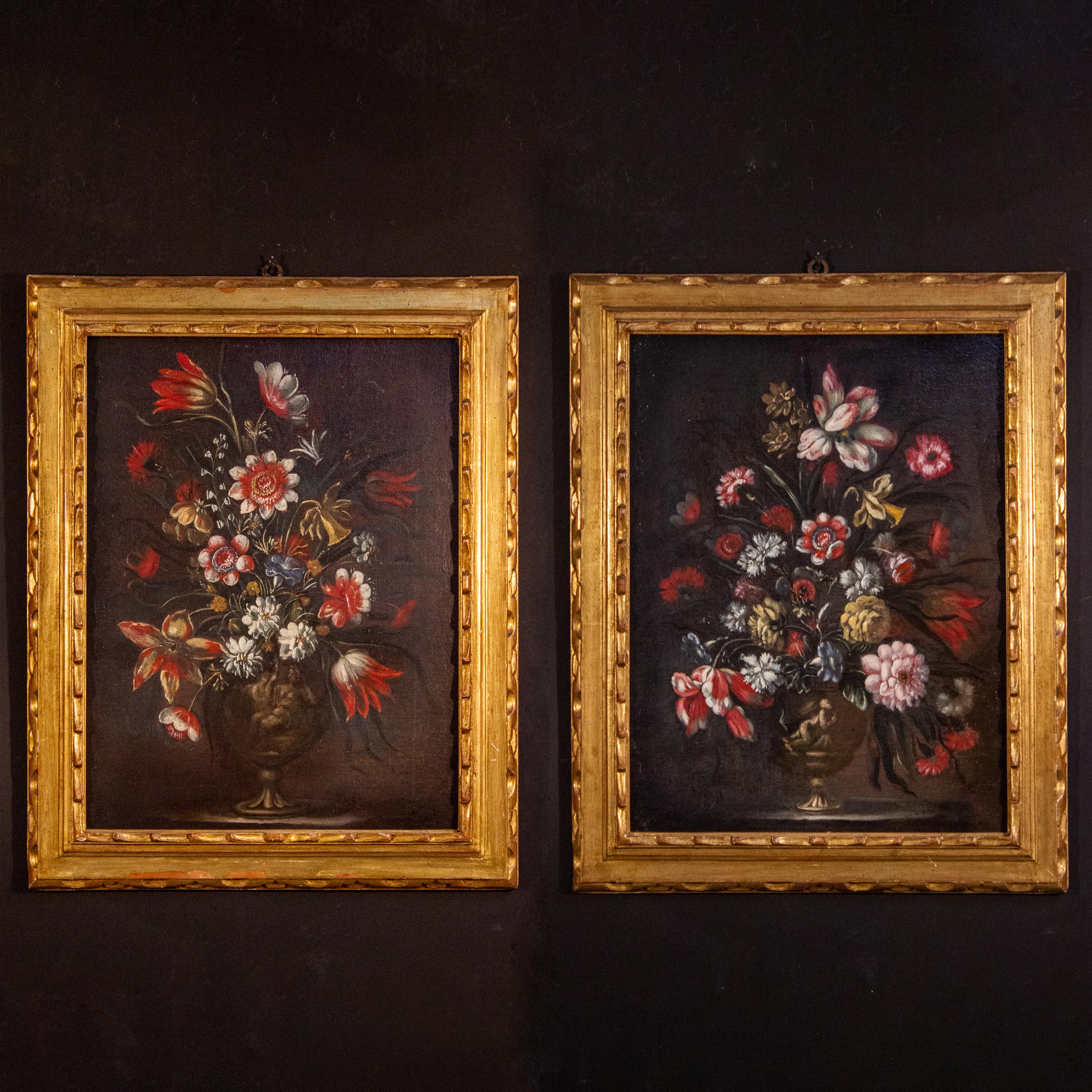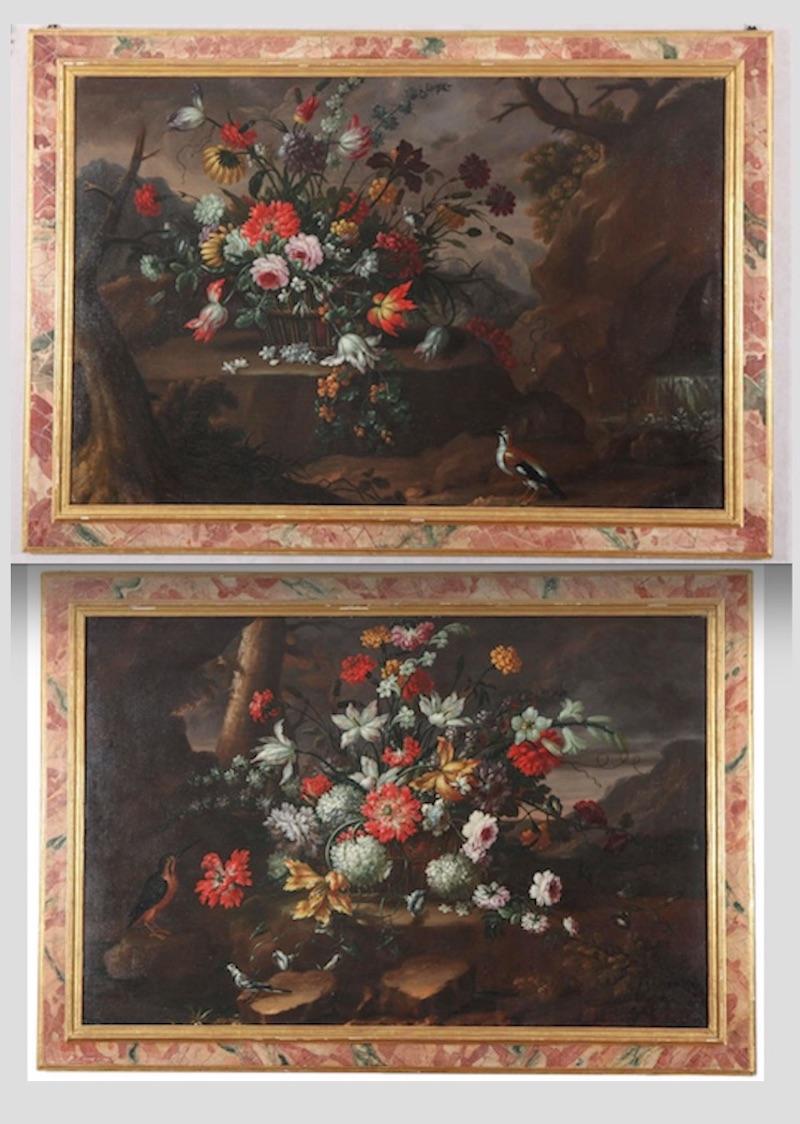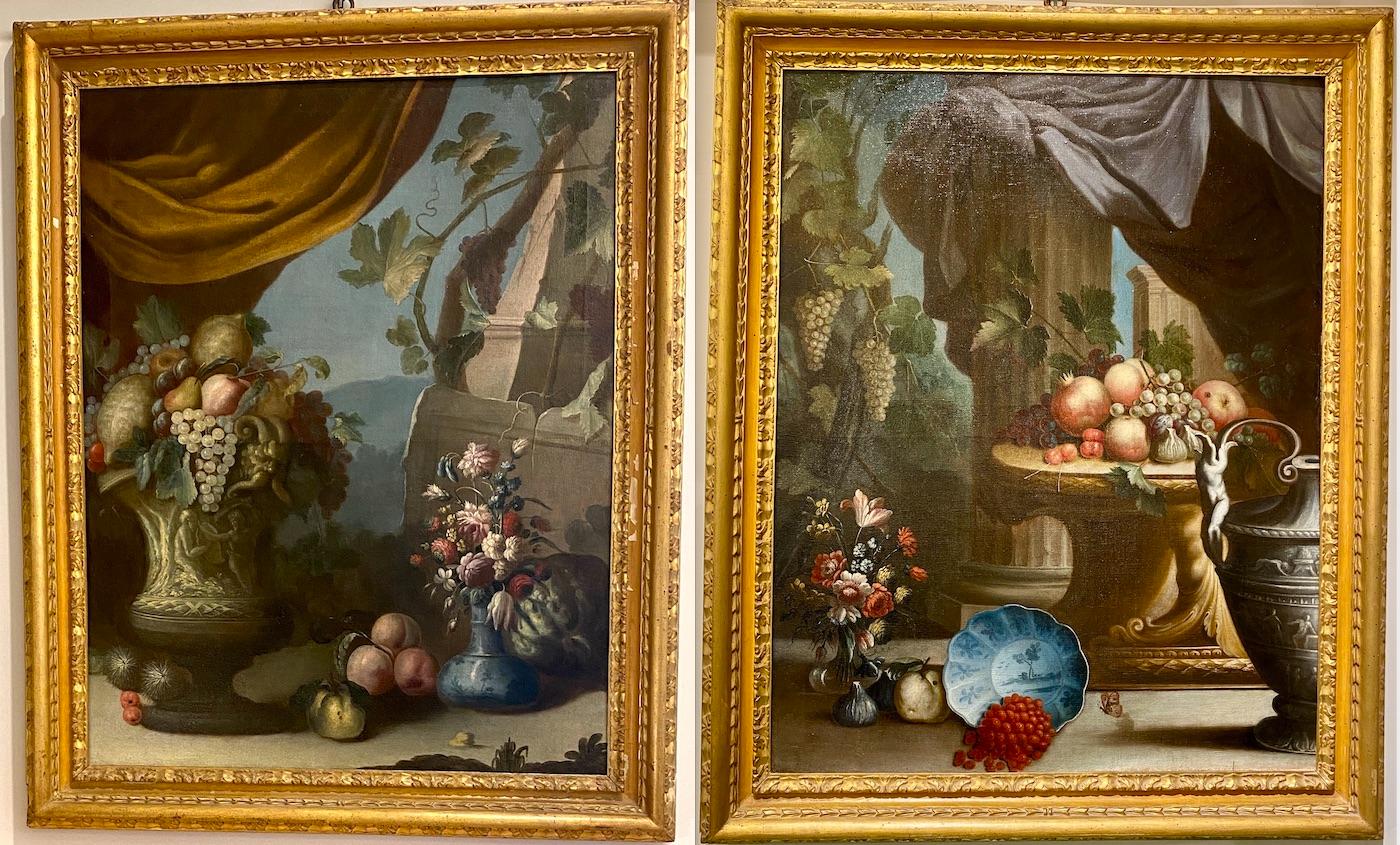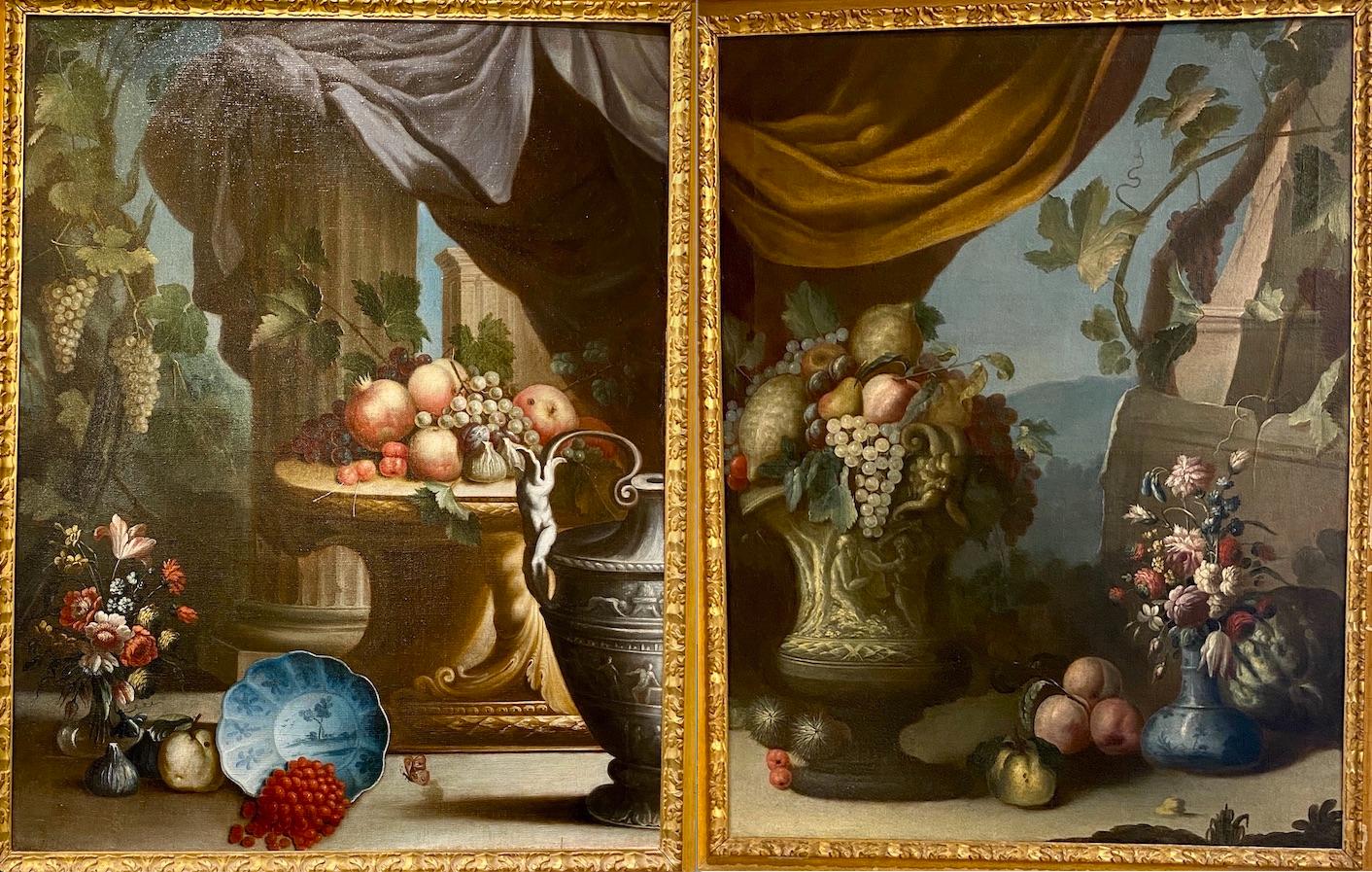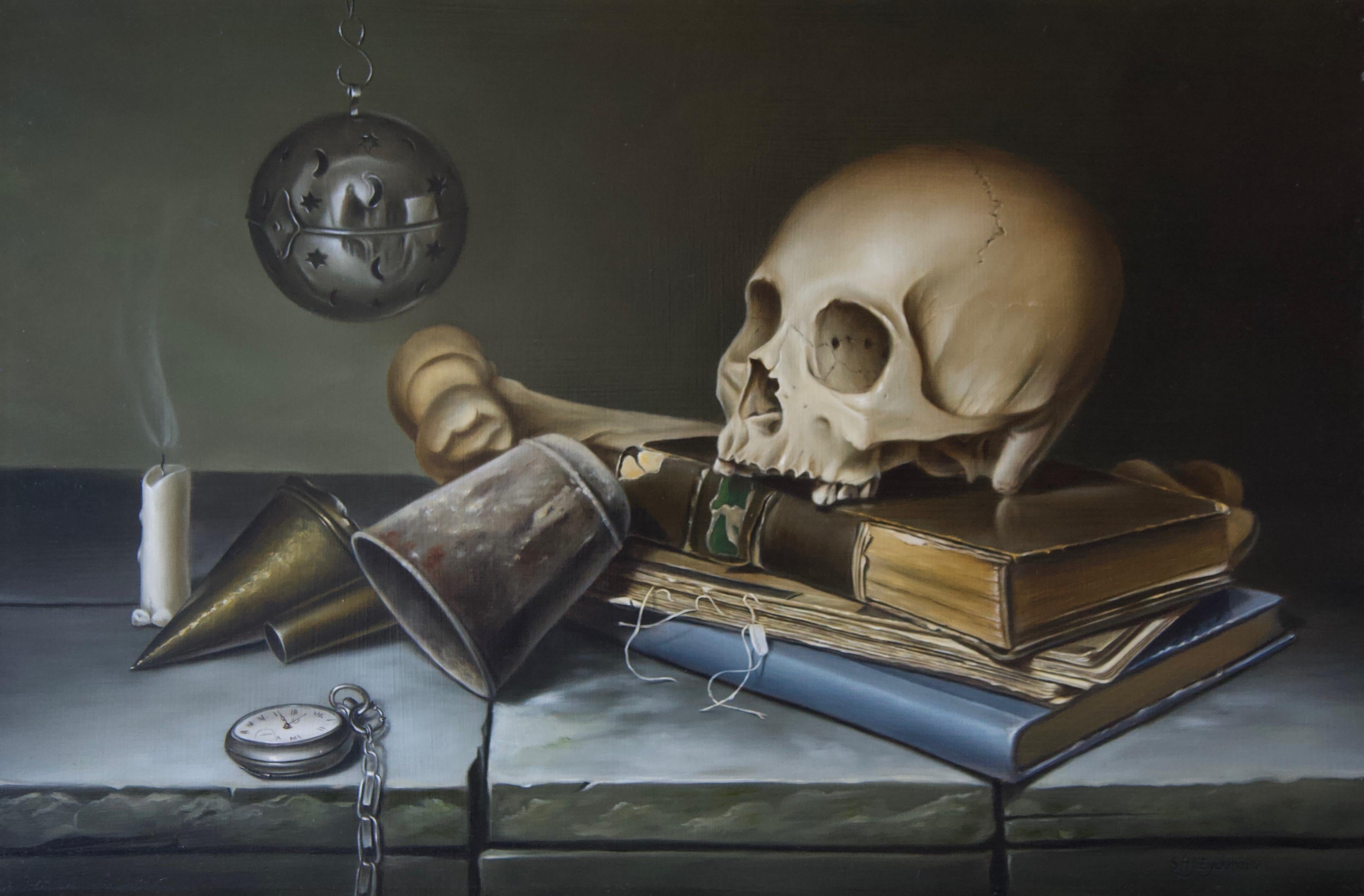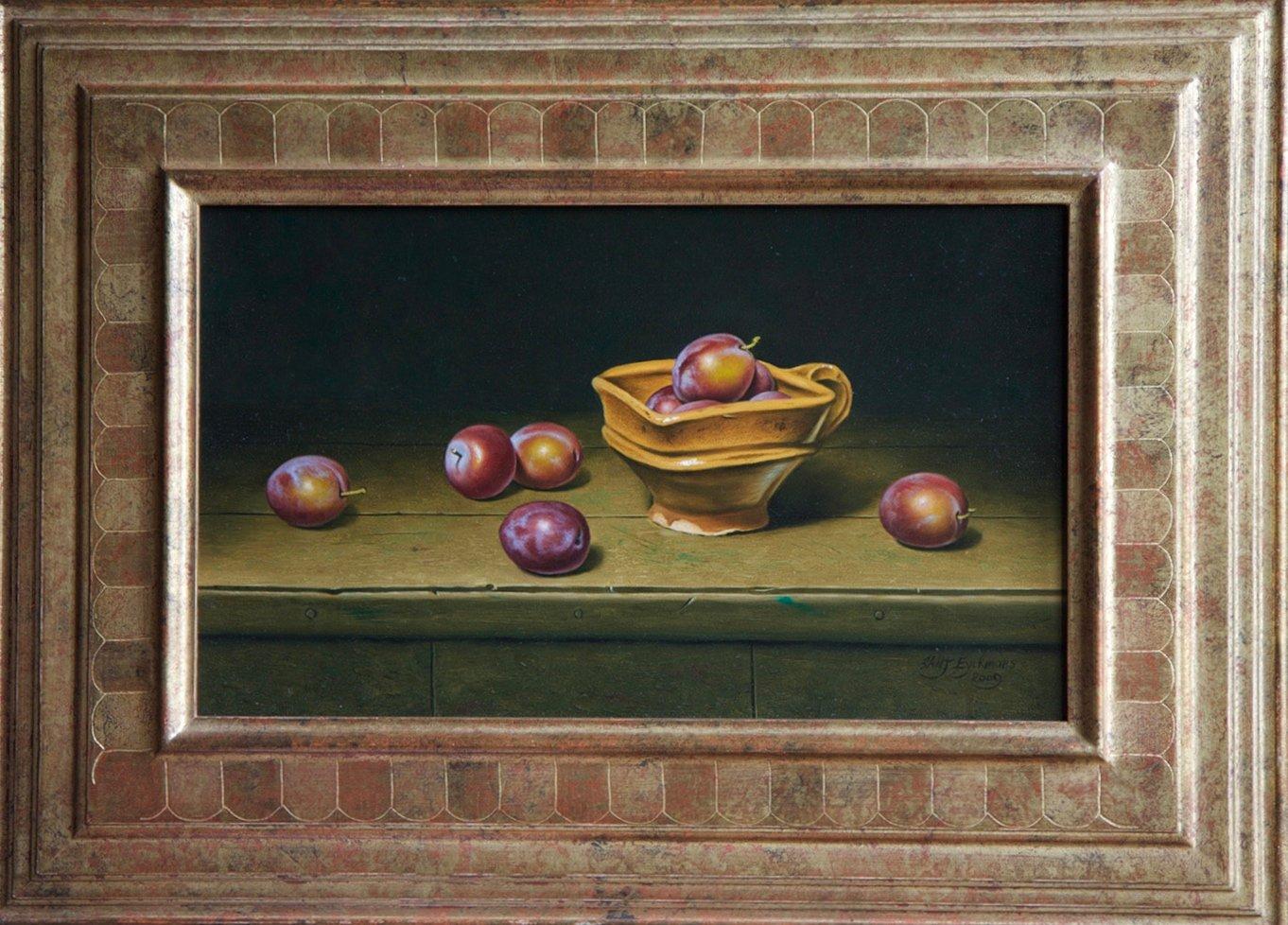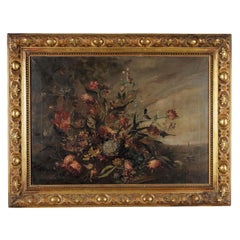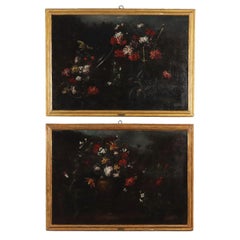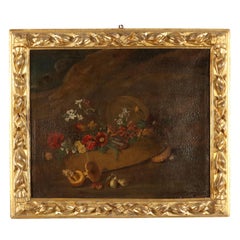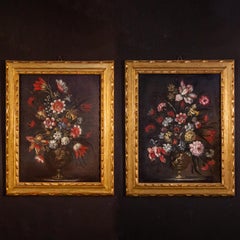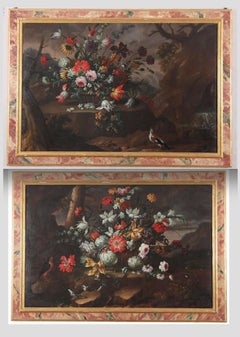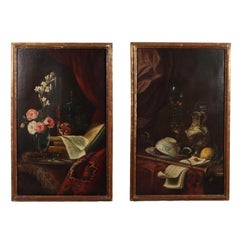
Dipinto Coppia di Nature morte fine 800 inizi 900
View Similar Items
Want more images or videos?
Request additional images or videos from the seller
1 of 15
UnknownDipinto Coppia di Nature morte fine 800 inizi 900XIX-XX secolo
XIX-XX secolo
About the Item
- Creation Year:XIX-XX secolo
- Dimensions:Height: 37.8 in (96 cm)Width: 24.02 in (61 cm)Depth: 1.97 in (5 cm)
- Medium:
- Period:
- Condition:
- Gallery Location:Milan, IT
- Reference Number:1stDibs: LU680314218942
About the Seller
4.8
Gold Seller
These expertly vetted sellers are highly rated and consistently exceed customer expectations.
Established in 2017
1stDibs seller since 2017
100 sales on 1stDibs
Typical response time: 2 hours
More From This SellerView All
- Painting with floral composition 20th centuryLocated in Milan, ITOil on Canvas. At lower left is unidentified signature. Large arrangement of variegated flowers placed outdoors on a bare, deserted ground. The colors of the flowers are spread with ...Category
20th Century Other Art Style Still-life Paintings
MaterialsOil
- Pair of Still Life Paintings with Flowers 18th centuryLocated in Milan, ITOil on Canvas. Venetian school of the 17th century. Attributive plaques are affixed to the frames to the scope of Elisabetta Marchioni , the painter originally from Rovigo and activ...Category
18th Century Other Art Style Still-life Paintings
MaterialsOil
- Dipinto Natura Morta con Funghi e Fiori XVIII secoloLocated in Milan, ITOlio su tela. Una delicata composizione di fiori è collocata dentro una sorta di culla di legno, con funghi e frutti per terra; lo sfondo è in esterno, ma poco definito da macchie v...Category
18th Century Other Art Style Still-life Paintings
MaterialsOil
$2,782 Sale Price20% Off - Dipinto con Natura morta con Frutta e Vasellame, XX secoloLocated in Milan, ITOlio su tela. La composizione guarda alle produzioni del XVII secolo e propone una tavola riccamente imbandita di vassoi di frutta, cesti di ciliege, canestri con pesche e grappoli d...Category
20th Century Other Art Style Still-life Paintings
MaterialsOil
- Fiori di Cardo 1958By Fiorenzo TomeaLocated in Milan, ITOlio su tela. Firmato in basso a sinistra. Al retro è presente etichetta della Galleria Annunciata di Milano, con il titolo e la data dell' opera. Fiorenzo Tomea realizzò, soprattutt...Category
1950s Other Art Style Still-life Paintings
MaterialsOil
$2,173 Sale Price20% Off - Vase, Roman excavations, 1860Located in Milan, ITOil painting on canvas. Signed and dated lower left. Further signature, date and title on the back. On the frame there is a stamp from an important private collection. The work proposes a composition of an amphora and a painted ceramic plate, surrounded on the right by roses. Milanese painter and decorator, Luigi Scrosati initially attended the Brera Academy, which he soon abandoned to devote himself to numerous trips abroad, in particular to Paris. Already from the beginning of his activity, in the 1940s, he worked as a painter of still lifes strongly influenced by French examples, in particular from the Lyon school. Alongside the easel and watercolor production, dominated by the specialization of still life of flowers, Scrosati was very active as an interior decorator, often engaged in team work alongside architects and project managers, but always with considerable autonomy and a characteristic style , substantially eclectic and aimed at a reinterpretation of the styles of the past. The debut in this area, towards the end of 1842, consists of a cycle of frescoes in the residence of San Fiorano (LO) owned by Giorgio Guido Pallavicino Trivulzio, for which Scrosati decorated a Gothic room, a Rococo living room...Category
19th Century Other Art Style Still-life Paintings
MaterialsOil
You May Also Like
- Pair of 18th century Italian Still Life Paintings of FlowersLocated in Rome, ITPair of very decorative Italian Still-life paintings of flowers with vases and classical figures . 18th century, oil on canvas, with original gilt-wood frames. This pair is an exce...Category
18th Century Baroque Still-life Paintings
MaterialsOil
$15,652 Sale Price20% Off - Still Life with Squash, Gourds, Stoneware, and a Basket with Fruit and CheeseLocated in New York, NYProvenance: Selma Herringman, New York, ca. 1955-2013; thence by descent to: Private Collection, New York, 2013-2020 This seventeenth century Spanish still-life of a laden table, known as a bodegón, stands out for its dramatic lighting and for the detailed description of each object. The artist’s confident use of chiaroscuro enables the sliced-open squash in the left foreground to appear as if emerging out of the darkness and projecting towards the viewer. The light source emanates from the upper left, illuminating the array, and its strength is made apparent by the reflections on the pitcher, pot, and the fruit in the basket. Visible brush strokes accentuate the vegetables’ rough surfaces and delicate interiors. Although the painter of this striking work remains unknown, it is a characteristic example of the pioneering Spanish still-lifes of the baroque period, which brought inanimate objects alive on canvas. In our painting, the knife and the large yellow squash boldly protrude off the table. Balancing objects on the edge of a table was a clever way for still-life painters to emphasize the three-dimensionality of the objects depicted, as well a way to lend a sense of drama to an otherwise static image. The knife here teeters on the edge, appearing as if it might fall off the table and out of the painting at any moment. The shape and consistency of the squash at left is brilliantly conveyed through the light brush strokes that define the vegetable’s fleshy and feathery interior. The smaller gourds—gathered together in a pile—are shrouded partly in darkness and stand out for their rugged, bumpy exterior. The stoneware has a brassy glaze, and the earthy tones of the vessels are carefully modulated by their interaction with the light and shadow that falls across them. The artist has cleverly arranged the still-life in a V-shaped composition, with a triangular slice of cheese standing upright, serving as its pinnacle. Independent still-lifes only became an important pictorial genre in the first years of the seventeenth century. In Italy, and particularly through the revolutionary works of Caravaggio, painted objects became carriers of meaning, and their depiction and arrangement the province of serious artistic scrutiny. Caravaggio famously asserted that it was equally difficult to paint a still-life as it was to paint figures, and the elevation of this new art form would have profound consequences to the present day. In Spain Juan Sanchez Cotan...Category
17th Century Old Masters Still-life Paintings
MaterialsCanvas, Oil
- Pair of Exceptional Italian Still Life Paintings of Flowers 18th centuryBy Anna Caterina GilliLocated in Rome, IT- ANNA CATERINA GILLI or GILLI Anna Caterina Turin 1729- 1751 Her paintings recorded in Turin as a decorative artist for the Royal Palace and the Stupinigi, working in a simil...Category
Mid-18th Century Baroque Still-life Paintings
MaterialsOil
- Pair of Exceptional Italian 18th Century Still-Life PaintingsLocated in Rome, ITThis pair of excellent Italian still life oil on canvas with flowers and fruit with classical ruins on the background and colored drapes create harmony of the composition. Notable ...Category
Early 18th Century Old Masters Still-life Paintings
MaterialsOil
- Pair of 18th century Italian Still Life Paintings of FlowersLocated in Rome, ITPair of very decorative Italian Still-life paintings of flowers with vases and classical figures . 18th century, oil on canvas, with original gilt-wood frames. This pair is an exce...Category
18th Century Baroque Still-life Paintings
MaterialsOil
- Pair of Exceptional Italian 18th Century Still-Life PaintingsLocated in Rome, ITThis pair of excellent Italian still life oil on canvas with flowers and fruit with classical ruins on the background and colored drapes create harmony of the composition. Notable ...Category
Early 18th Century Old Masters Still-life Paintings
MaterialsOil
